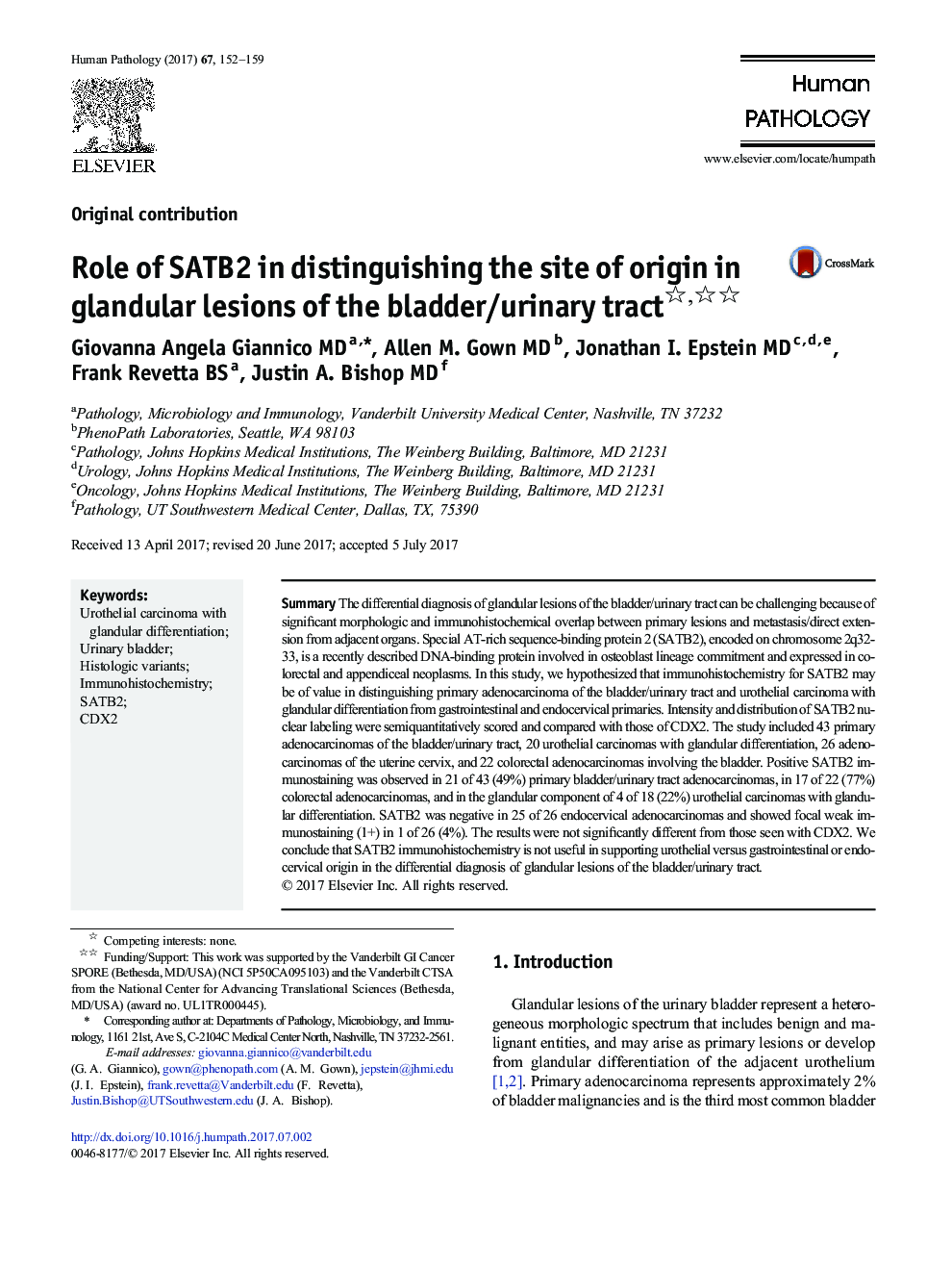| کد مقاله | کد نشریه | سال انتشار | مقاله انگلیسی | نسخه تمام متن |
|---|---|---|---|---|
| 5716246 | 1606643 | 2017 | 8 صفحه PDF | دانلود رایگان |

- There is significant overlap between primary and secondary bladder glandular lesions.
- CDX2 and SATB2 immunostains were compared in primary and secondary glandular lesions.
- SABT2 was similarly expressed in primary and metastatic adenocarcinoma.
- SATB2 was less sensitive and more specific than CDX2, with low specificity in both.
- SATB2 is not useful in discerning primary and secondary bladder glandular lesions.
SummaryThe differential diagnosis of glandular lesions of the bladder/urinary tract can be challenging because of significant morphologic and immunohistochemical overlap between primary lesions and metastasis/direct extension from adjacent organs. Special AT-rich sequence-binding protein 2 (SATB2), encoded on chromosome 2q32-33, is a recently described DNA-binding protein involved in osteoblast lineage commitment and expressed in colorectal and appendiceal neoplasms. In this study, we hypothesized that immunohistochemistry for SATB2 may be of value in distinguishing primary adenocarcinoma of the bladder/urinary tract and urothelial carcinoma with glandular differentiation from gastrointestinal and endocervical primaries. Intensity and distribution of SATB2 nuclear labeling were semiquantitatively scored and compared with those of CDX2. The study included 43 primary adenocarcinomas of the bladder/urinary tract, 20 urothelial carcinomas with glandular differentiation, 26 adenocarcinomas of the uterine cervix, and 22 colorectal adenocarcinomas involving the bladder. Positive SATB2 immunostaining was observed in 21 of 43 (49%) primary bladder/urinary tract adenocarcinomas, in 17 of 22 (77%) colorectal adenocarcinomas, and in the glandular component of 4 of 18 (22%) urothelial carcinomas with glandular differentiation. SATB2 was negative in 25 of 26 endocervical adenocarcinomas and showed focal weak immunostaining (1+) in 1 of 26 (4%). The results were not significantly different from those seen with CDX2. We conclude that SATB2 immunohistochemistry is not useful in supporting urothelial versus gastrointestinal or endocervical origin in the differential diagnosis of glandular lesions of the bladder/urinary tract.
Journal: Human Pathology - Volume 67, September 2017, Pages 152-159